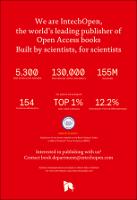Chapter A Review of Compliant Movement Primitives
| dc.contributor.author | Gams, Andrej | |
| dc.contributor.author | Ude, Ales | |
| dc.contributor.author | Petrič, Tadej | |
| dc.contributor.author | Denisa, Miha | |
| dc.date.accessioned | 2021-06-02T10:08:00Z | |
| dc.date.available | 2021-06-02T10:08:00Z | |
| dc.date.issued | 2016 | |
| dc.identifier | ONIX_20210602_10.5772/64058_269 | |
| dc.identifier.uri | https://library.oapen.org/handle/20.500.12657/49155 | |
| dc.description.abstract | Neurodegenerative diseases are being modelled in-vitro using human patient-specific, induced pluripotent stem cells and transgenic embryonic stem cells to determine more about disease mechanisms, as well as to discover new treatments for patients. Current research in modelling Alzheimer’s disease, frontotemporal dementia and Parkinson’s disease using pluripotent stem cells is described, along with the advent of gene-editing, which has been the complimentary tool for the field. Current methods used to model these diseases are predominantly dependent on 2D cell culture methods. Outcomes reveal that only some of the phenotype can be observed in-vitro, but these phenotypes, when compared to the patient, correlate extremely well. Many studies have found novel molecular mechanisms involved in the disease and therefore elucidate new potential targets for reversing the phenotype. Future research that includes studying more complex 3D cell cultures, as well as accelerating aging of the neurons, may help to yield stronger phenotypes in the cultured cells. Thus, the use and application of pluripotent stem cells for modelling disease have already shown to be a powerful approach for discovering more about these diseases, but will lead to even more findings in the future as gene and cell culture technology continues to develop. | |
| dc.language | English | |
| dc.subject.classification | bic Book Industry Communication::P Mathematics & science::PS Biology, life sciences::PSF Cellular biology (cytology) | |
| dc.subject.other | Disease modelling, Alzheimer’s disease, frontotemporal dementia, Parkinson’s disease, pluripotent stem cells | |
| dc.title | Chapter A Review of Compliant Movement Primitives | |
| dc.type | chapter | |
| oapen.identifier.doi | 10.5772/64058 | |
| oapen.relation.isPublishedBy | 09f6769d-48ed-467d-b150-4cf2680656a1 | |
| oapen.relation.isFundedBy | FP7-ICT-2011-9 | |
| oapen.grant.number | 600578 | |
| oapen.grant.acronym | ACAT |

